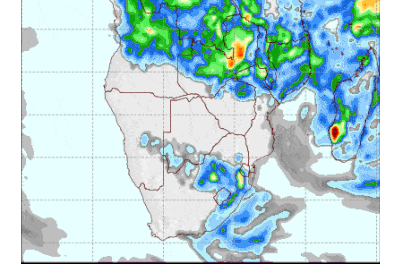
IRI model forecasts dry three months for rest of Namibia’s summer rainfall season

Namibia is to expect below normal rainfall over the next three months according to the seasonal forecast of the International Research Institute for Climate and Society at the University of Columbia in the United States.
In its latest assessment, released on 15 January, of global meteorological conditions, the model predicts a 40% to 50% probability that most of Namibia will experience below normal rainfall for most of the summer rainfall season.
STRONG EL NINO
“During December 2023, the sea surface temperatures (SSTs) in the central-eastern equatorial Pacific Ocean exceeded the threshold for a strong El Niño event, with the NINO3.4 index reaching +1.99 °C. The weekly-averaged SST anomalies in the NINO3.4 region remained at +1.90 °C for the week centered on 03 January 2024,” the model discussion states.
Southern Africa is listed among several other regions where the model predicts below-normal rainfall although conditions may change by April as the Pacific Ocean El Nino returns to an ENSO neutral stance. (ENSO – El Nino Southern Oscillation)
Regarding the so-called Indian Ocean Dipole, i.e. warmer water off the Tanzanian coast, the model expects a gradual weakening. In early January, sea surface temperature off the African east coast was only half a degree Celsius warmer than normal but the seasonal oscillation was still defined as “positive.”
The Indian Ocean Dipole describes the movement of warmer and cooler water in the Indian Ocean. When the dipole is labelled “negative”, it indicates warmer water off Western Australia and cooler water along Africa. The opposite, “positive” indicates cooler water along Australia with warmer water along Africa.
In general, a negative Indian Ocean Dipole may produce below normal precipitation in Western Australia and Indonesia while a positive stance may lead to enhanced rainfall in East Africa.
From this observation, it is apparent that the forecasts leaning more on conditions in the Indian Ocean is at a slight variance to forecasts that lean mostly on the stance of the El Nino Southern Oscillation (ENSO).
For instance, South Africa that was predicted to receive below normal rainfall in December and January, has been inundated in many areas during this season.

IRI multi-model probability forecast for precipitation for February, March, April 2024 (Issued January 2024)
Source:
https://iri.columbia.edu/our-expertise/climate/forecasts/seasonal-climate-forecasts/Inte











































